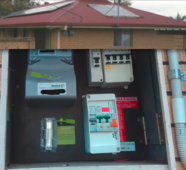I don’t know if people realize that most solar hot water heaters have elements built into them for backup heating on cloudy days. I have also seen ones with the heating element sitting flat on the roof and a small pump circulates the water across the element to the remotely placed tank. Kind of the best of both worlds scenario.
In Australia pretty much all solar thermal systems have a backup boost system, either electric or gas. It would be mandatory for health reasons (legionella control).
Often people don't realise their solar thermal system has stopped working until much later when their electric or gas bill goes up a lot because the booster is now doing all the work.
Still not a fan of heat pumps- thermal PV just works (at worst we had to change a $30 water pump once- only because its cover got damaged whippersnipping and it filled with rainwater- who would have thought that that might make it stop working lol), I know of three heatpump ones that have had to get expensive repairs within a few years...
In rural / regional areas they are a risk. These are places where simple and robust technology reigns supreme. Anything which can be readily repaired by yourself is a good thing especially when using readily available stock items which don't cost much.
Also not helped by a heat pump water heater industry full of bottom feeding charlatan installers selling crappy product with shoddy instals as a way to pocket govt handouts, then they wind up the company to avoid all future responsibility. The better quality systems are very good though. There are 3-4 brands/types I would use. The rest no thanks.
Years ago, solar hot water would potentially have been a better option (cost) and if its still working and doing what it was designed to do then why would anyone think its a bad thing?
I don't think anyone considers an existing working system a bad thing. It'll have likely paid for itself many moons back and long may it continue to supply cheap hot water. The day will eventually come however when it reaches the end of its useful life and needs replacement. That's when the available alternative options are to be considered.
In some cases solar thermal will still be a wise choice. e.g. there may be regulatory restrictions on how much PV you can install, so as a way to increase the energy capture potential of your roof/block, you stick with solar thermal for the water heating, freeing up the PV for everything else.
A water tank is after all a pretty cheap form of energy storage.



